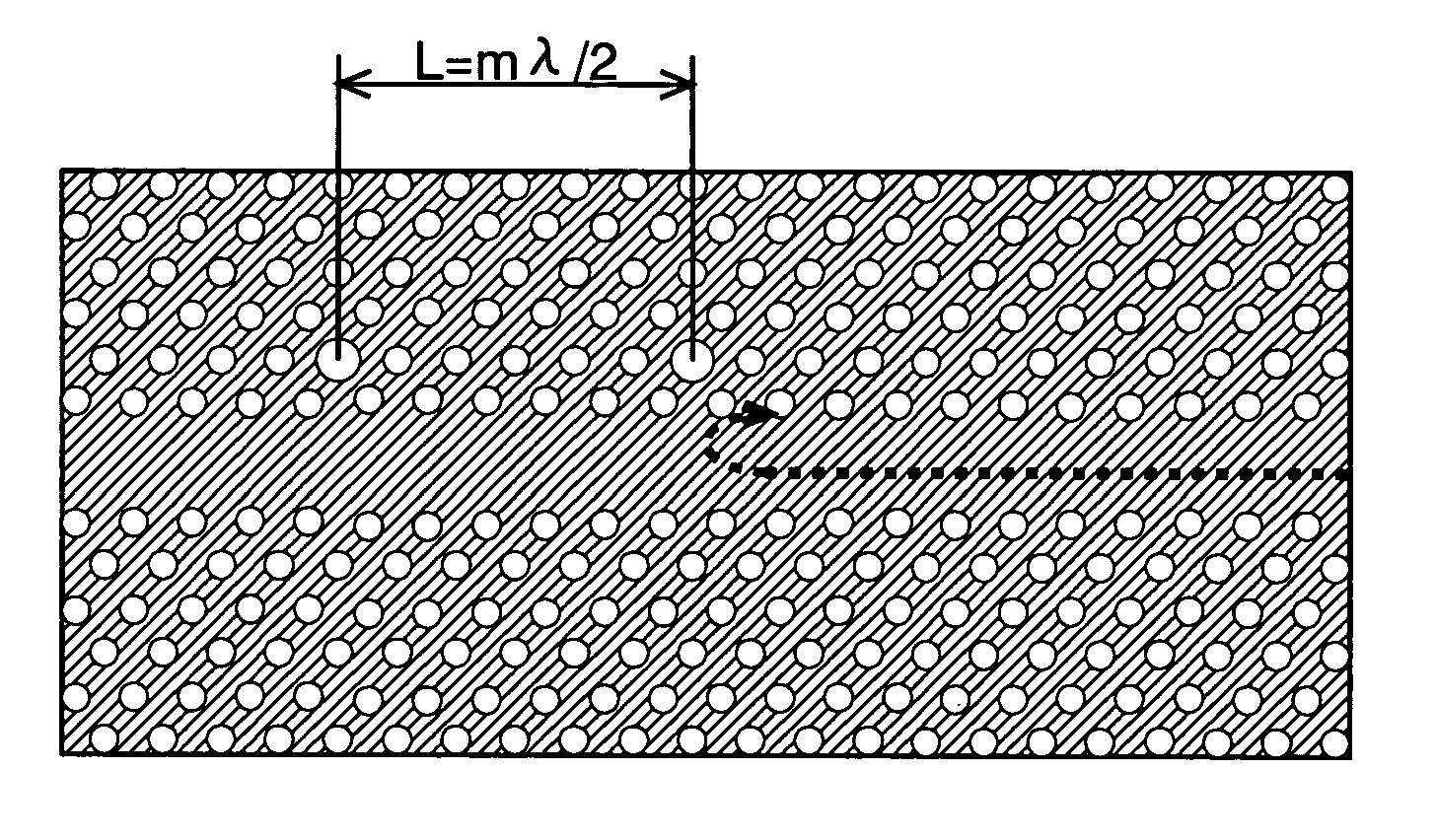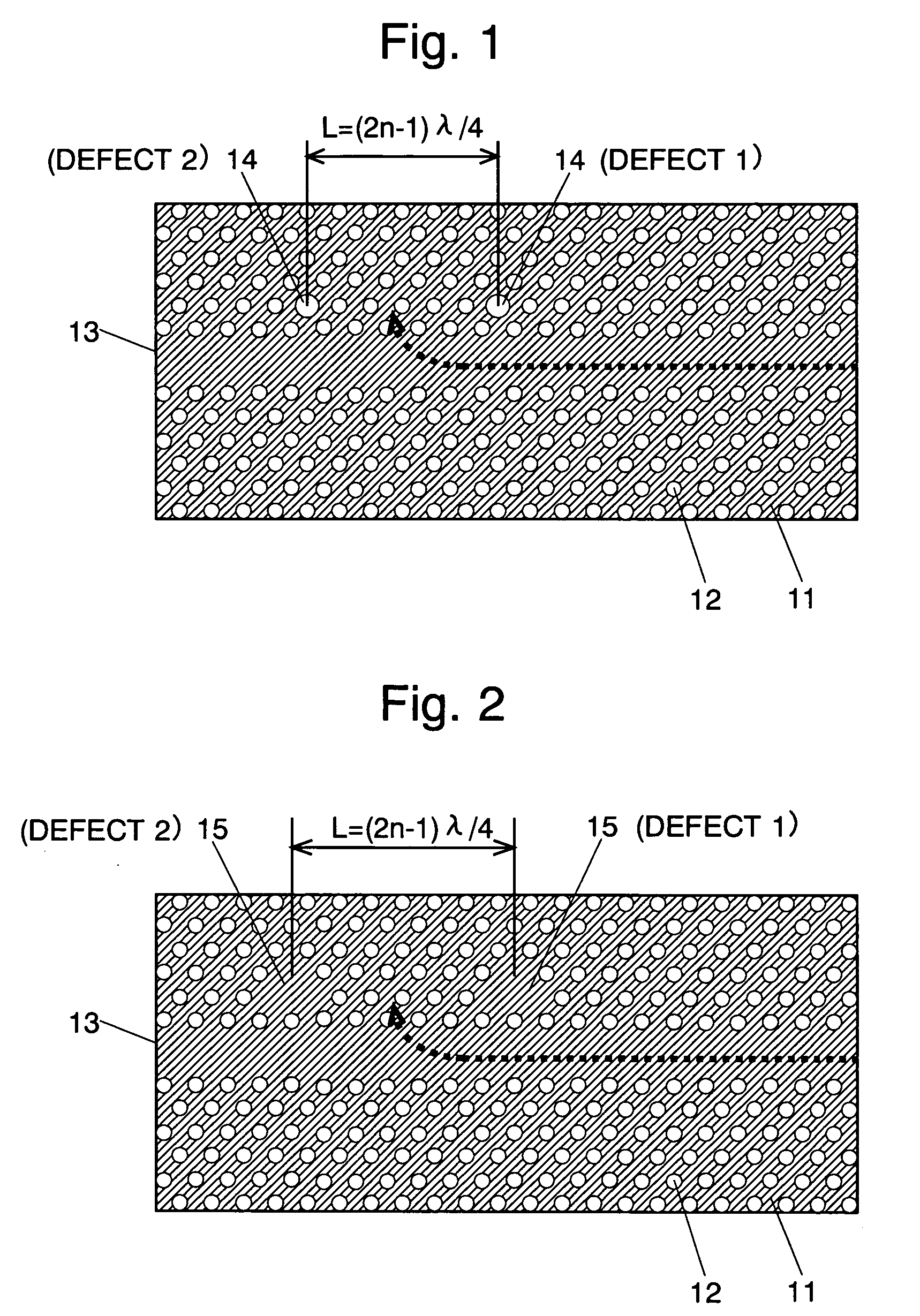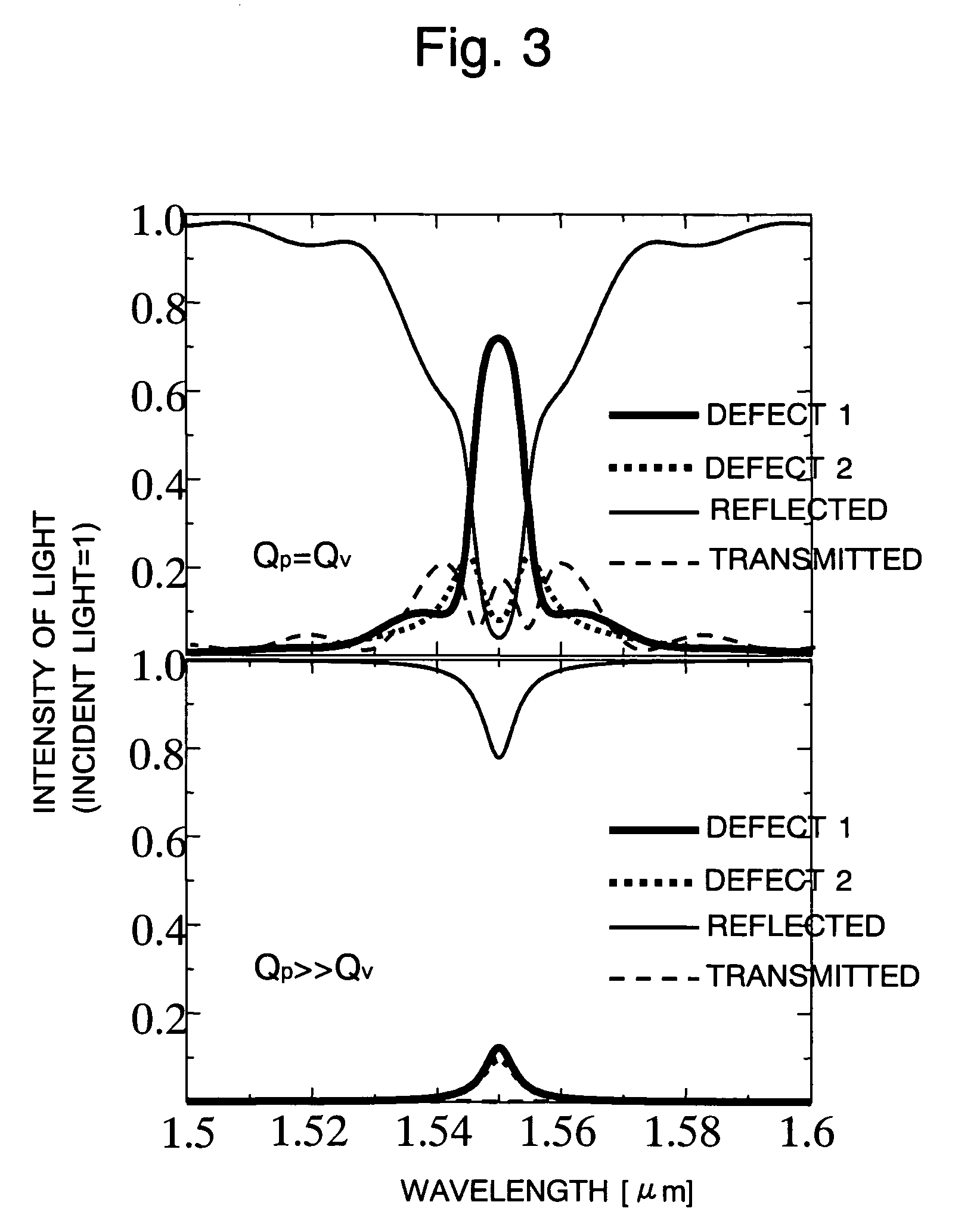Two-dimensional photonic crystal optical resonator and optical reflector using interference between point defects
a photonic crystal and optical resonator technology, applied in the field of optical resonators and optical reflectors, can solve the problems of deteriorating the light-extracting efficiency of the optical resonator, increasing the size of the device, and not allowing the propagation of light, so as to improve the efficiency of reflecting light, improve the efficiency of reflected light, and improve the effect of resonan
- Summary
- Abstract
- Description
- Claims
- Application Information
AI Technical Summary
Benefits of technology
Problems solved by technology
Method used
Image
Examples
Embodiment Construction
(1) Example of Structure According to First Mode
[0056]FIGS. 1 and 2 show an example of the structure of the two-dimensional photonic crystal optical resonator using interference between point defects according to the present invention. The plate-shaped object shown in FIGS. 1 and 2 is the slab (body) 11. When the infrared light of 1.5 μm waveband used in optical communications is considered, the slab 11 may be made from InGaAsP, which is transparent to that waveband.
[0057] On this slab 11, holes 12 are arranged at cycle a. These holes 12 are the modified refractive index areas, whereby a photonic bandgap is formed. FIGS. 1 and 2 show an example in which holes 12 are arranged in a triangular lattice pattern. It is possible to use other periodical arrangement patterns, such as a square lattice pattern.
[0058] The aforementioned Japanese Unexamined Patent Publication No. 2001-272555 teaches that the aforementioned waveband corresponds to the frequency range from 0.27c / a to 0.28c / a, ...
PUM
 Login to View More
Login to View More Abstract
Description
Claims
Application Information
 Login to View More
Login to View More - R&D
- Intellectual Property
- Life Sciences
- Materials
- Tech Scout
- Unparalleled Data Quality
- Higher Quality Content
- 60% Fewer Hallucinations
Browse by: Latest US Patents, China's latest patents, Technical Efficacy Thesaurus, Application Domain, Technology Topic, Popular Technical Reports.
© 2025 PatSnap. All rights reserved.Legal|Privacy policy|Modern Slavery Act Transparency Statement|Sitemap|About US| Contact US: help@patsnap.com



